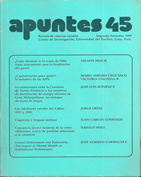Capitalization for whom?: The PFAs System
DOI:
https://doi.org/10.21678/apuntes.45.486Keywords:
Peru, Pension fund administrators, profitability, competitionAbstract
We simulate rates of return, administration fees and market shares for the five private pension fund managers that constitute the Peruvian AFP industry. After five years of operation and payment of costs related to the introduction of individual pension accounts and the financial strengthening of private managers, the oligopoly reaches high profitability rates. Transactional costs remain high due to lack of competition. Since its inception, affiliates have earned negative returns on their old-age savings thus motivating non-payment of mandatory contributions and the increased "informalization" of the labor force. Oldage coverage (AFPs and the public scheme) is only 30% of the labor force mainly for dependent and high-income workers. Two thirds of the labor force continues without coverage.
Thus, the pension system requires a profound restructuring to address issues such as the introduction of new products, competition, reducing high opportunity costs, the principal agent problem and moral hazard due to the absence of a minimum pension in the private scheme.
Downloads
Downloads
Published
How to Cite
Issue
Section
License
Apuntes publishes all its articles and reviews under a Creative Commons Attribution (CC BY 4.0) license with the objective of promoting academic exchange worldwide. Therefore, articles and book reviews can be distributed, edited, amended, etc., as the author sees fit. The only condition is that the name of the author(s) and Apuntes. Revista de Ciencias Sociales (as the publisher) be cited.



.jpg)
